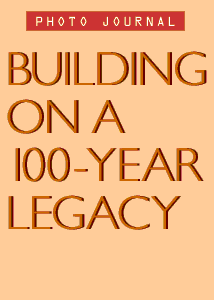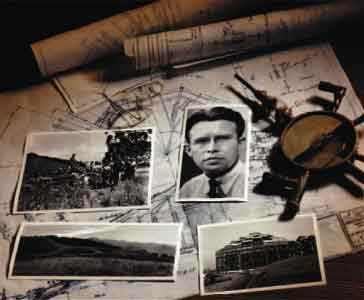 |
|
|||||||||||||
|
"The
day when the scientist, no matter how devoted, may make significant
progress
alone and without material help is past." — E.O. Lawrence accepting his Nobel Prize. |
||||||||||||||
 rnest
Orlando Lawrence (1901-1958) won the 1939 Nobel Prize in Physics for
his invention of the cyclotron, a circular particle accelerator the
size of a shoebox that was the forerunner to all of the most powerful
accelerators in the world today. Lawrence's cyclotron opened the door
to modern high-energy physics, but his most enduring legacy was his
unique approach to doing scientific research. Lawrence believed that
scientific progress was best achieved through teams of scientists
with different fields of expertise. It was also his conviction that
engineers should be included as full partners on these teams. Guided
by this belief, he founded his Radiation Laboratory in an old wooden
building on the Berkeley campus of the University of California. Nine
years later, he moved his laboratory to its present location on the
hills above the campus in order to construct the 184-Inch Cyclotron.
Upon his death in 1958, the laboratory he founded was renamed in his
honor. Lawrence's teamwork concept remains the hallmark of how science
is done at the Lawrence Berkeley National Laboratory. This legacy
from its founding father has yielded rich dividends in basic knowledge
and applied technology, and a profusion of awards, including nine
Nobel Prizes-five in physics and four in chemistry. "It goes
without saying that it is the laboratory that is honored," E.O.
Lawrence said, upon being informed of his Nobel Prize. rnest
Orlando Lawrence (1901-1958) won the 1939 Nobel Prize in Physics for
his invention of the cyclotron, a circular particle accelerator the
size of a shoebox that was the forerunner to all of the most powerful
accelerators in the world today. Lawrence's cyclotron opened the door
to modern high-energy physics, but his most enduring legacy was his
unique approach to doing scientific research. Lawrence believed that
scientific progress was best achieved through teams of scientists
with different fields of expertise. It was also his conviction that
engineers should be included as full partners on these teams. Guided
by this belief, he founded his Radiation Laboratory in an old wooden
building on the Berkeley campus of the University of California. Nine
years later, he moved his laboratory to its present location on the
hills above the campus in order to construct the 184-Inch Cyclotron.
Upon his death in 1958, the laboratory he founded was renamed in his
honor. Lawrence's teamwork concept remains the hallmark of how science
is done at the Lawrence Berkeley National Laboratory. This legacy
from its founding father has yielded rich dividends in basic knowledge
and applied technology, and a profusion of awards, including nine
Nobel Prizes-five in physics and four in chemistry. "It goes
without saying that it is the laboratory that is honored," E.O.
Lawrence said, upon being informed of his Nobel Prize. |
||||||||||||||
| < Research Review | Top ^ | Next > |
